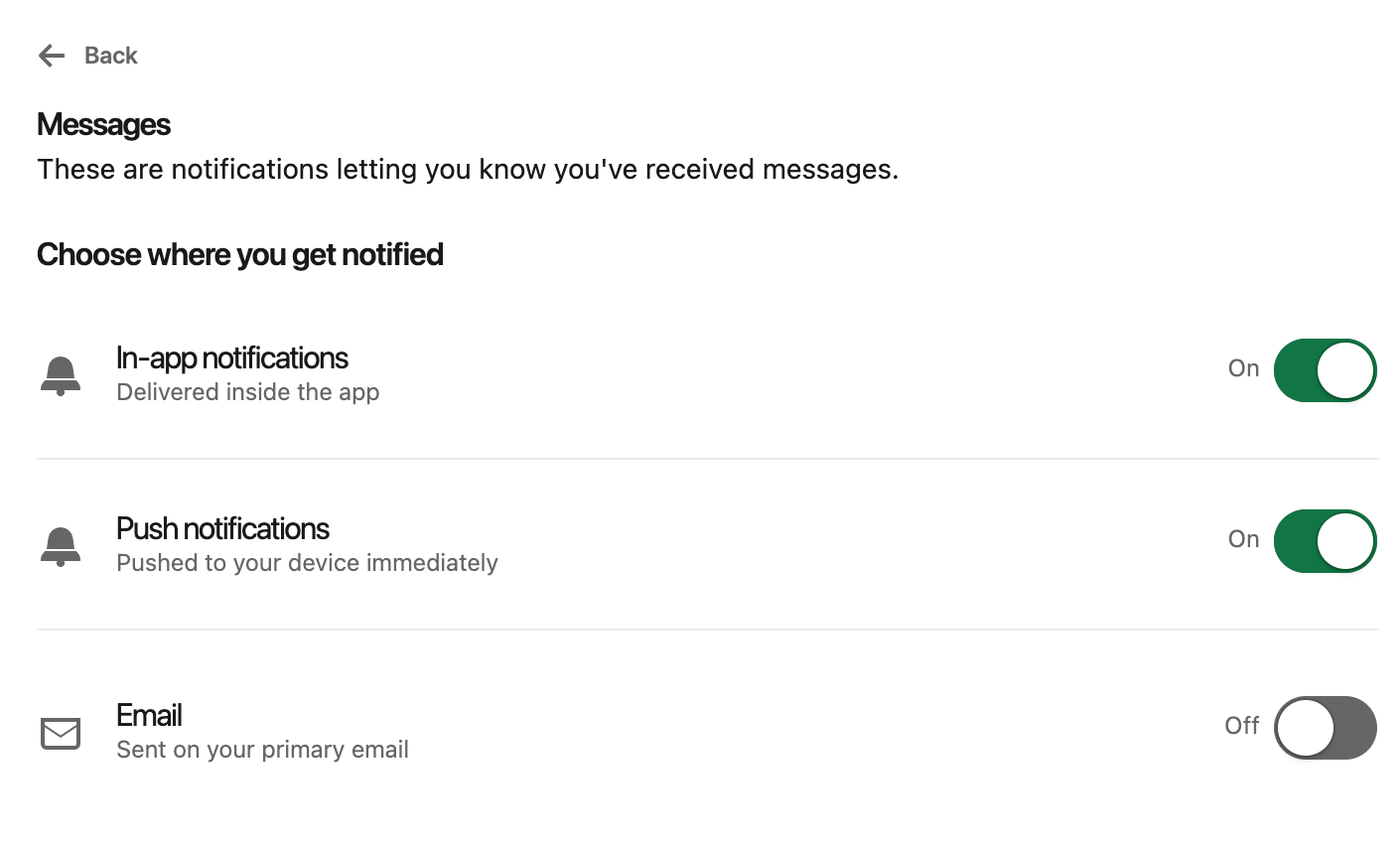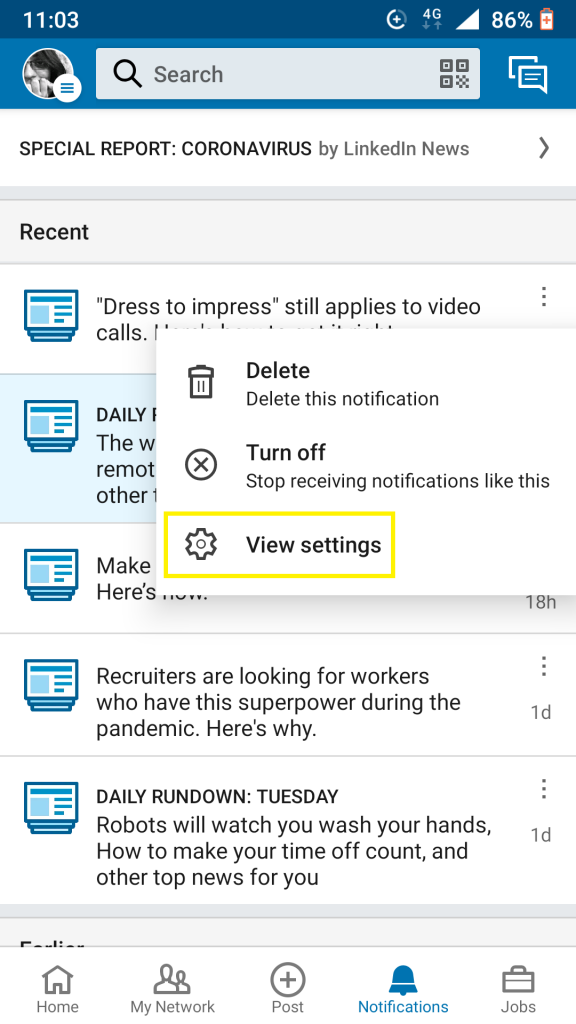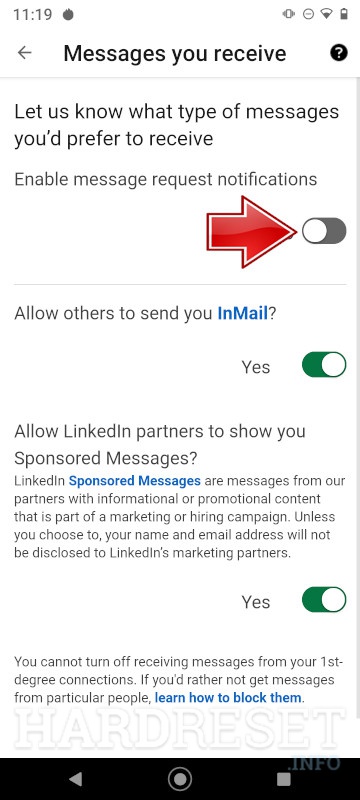Ever found yourself missing important updates on LinkedIn? You’re not alone! Keeping track of notifications on LinkedIn can be a bit overwhelming, especially if you’re actively networking or job hunting. Thankfully,
Why LinkedIn Notifications Are Important

LinkedIn notifications can be a game-changer for professionals looking to stay connected and informed. Here are a few compelling reasons why you should take notifications seriously:
- Stay Updated on Connections: Notifications alert you when people you know are changing jobs, receiving endorsements, or celebrating work anniversaries. This allows you to send congratulatory messages, which can strengthen your relationships.
- Job Opportunities: Many job postings and opportunities are shared directly through LinkedIn. Email notifications ensure you’re among the first to know when positions that match your skills become available.
- Engage with Content: When your connections share articles, post updates, or comment on industry news, receiving notifications helps you engage with their content promptly. This is essential for building your professional brand.
- Network Growth: Every time someone views your profile, sends you a connection request, or interacts with your posts, it’s a chance to expand your network. Notifications can help you capitalize on these moments.
- Market Insights: LinkedIn provides insights into what’s happening in your industry through notifications about trends and relevant conversations. Staying informed on these topics can help you position yourself better within your field.
Receiving these notifications via email keeps you in the loop without needing to log into LinkedIn multiple times a day. Whether you’re a busy professional or someone actively seeking new opportunities, timely email alerts can help you manage your professional interactions effectively and seize new opportunities as they arise. In the next section, we’ll explore how you can easily set up LinkedIn email notifications to maximize your networking potential.
Also Read This: Where is My LinkedIn QR Code Accessing and Using Your LinkedIn QR Code for Easy Networking
3. Accessing Your LinkedIn Email Settings

Now that you understand why LinkedIn notifications are important, let’s dive into how you can access your email settings to tailor these alerts to your liking. Whether you’re looking to stay updated on job postings, connection requests, or just want to keep an eye on your network, adjusting your settings is a straightforward process.
First, log into your LinkedIn account. Once you're in, follow these steps:
- Click on the Me icon at the top of your LinkedIn homepage. This will open a dropdown menu.
- Select Settings & Privacy from the options listed. This is where the magic begins!
- In the settings menu, look for the Communications section. It’s often labeled as "Notifications" or something similar.
- Click on Email Notifications, and you’ll be directed to a page filled with different options for customizing how and when you receive notifications.
Once here, you’ll see a variety of settings that let you control which types of notifications you receive via email. Take a moment to analyze these options — they can make a big difference in how connected you feel to your professional network.
As you explore these settings, make sure to check your current email address. It’s crucial that this is correct since all notifications will be sent to this inbox. You can change it right there if you need to.
In case you’re wondering, LinkedIn typically sends out emails for:
- New connection requests
- Messages from other members
- Updates on job postings related to your profile
- Engagement notifications, such as likes or comments on your posts
- Group activity updates
Accessing your email settings is just the first step. Now, let’s talk about how to make these notifications truly work for you!
Also Read This: How to Format Text in LinkedIn Post
4. How to Customize Your Email Notifications

After accessing your LinkedIn email settings, it’s time to customize your email notifications to fit your professional lifestyle. Tailoring these alerts can help you prioritize what truly matters, cutting down that pesky email clutter. Here’s how to go about it:
Inside the email notifications section, you'll notice a checklist of various notification types. Here’s how to customize them:
- Look at the categories listed, which often include options for Network Updates, Job Alerts, and Content Engagement.
- For each category, pay close attention to the specific notifications available. For example:
- Under Connections, decide if you want to be notified when someone views your profile.
- For Job Alerts, choose the frequency – immediate, daily, or weekly updates.
Additionally, you can choose the timing for certain emails. For instance, you may prefer daily summaries of your network's activities instead of real-time alerts, helping you stay informed without feeling bombarded.
Moreover, try to segment your notifications based on your current professional goals. If you’re actively job hunting, keeping job-related notifications on is a no-brainer. On the other hand, if you're focusing on content creation and networking, prioritize those updates. Customization is key!
Once you’ve set up your email notifications just the way you like, you’ll find that staying engaged with your LinkedIn network becomes much more manageable. Tailoring these alerts means you can stay focused on what matters most, enhancing your professional experience without the excess noise.
In summary, customizing your LinkedIn email notifications is all about finding that sweet spot between staying informed and avoiding overload. So, don't shy away from fine-tuning your settings until they reflect your professional needs perfectly!
Also Read This: What Is My LinkedIn Address and How to Share It with Potential Employers
5. Opting In for Specific Notifications
If you want to tailor your LinkedIn experience and ensure that you receive notifications that truly matter to you, opting in for specific notifications is the way to go. LinkedIn offers a variety of notification settings that allow you to control what lands in your inbox. Here’s how to do it:
- Log into Your LinkedIn Account: Start by logging into your LinkedIn profile. Once you’re in, look for your profile picture in the top right corner.
- Access Settings & Privacy: Click on your picture, and a drop-down menu will appear. Select “Settings & Privacy” from this menu.
- Navigate to Communications: In the left sidebar, you’ll see an option for “Communications.” Click on that to access all your notification settings.
- Manage Your Notifications: Within the Communications section, you'll find a “Notifications” area. Here, you can see all the types of notifications available, ranging from connection requests to updates on your posts.
- Customize Your Preferences: You can turn on or off notifications for specific activities. For instance, if you want to be notified about job recommendations but not about birthdays, that’s totally possible! Just toggle the options you prefer.
Additionally, you can decide how you receive these notifications. You might prefer email notifications for certain updates and mobile notifications for others. Simply choose the method that suits your lifestyle best!
Remember, quality over quantity is key here. By opting in for specific notifications, you’ll ensure that your email isn’t flooded with irrelevant information, allowing you to focus on what truly benefits your professional journey.
Also Read This: How to Export Contacts from LinkedIn
6. Understanding Different Types of LinkedIn Emails
When you're navigating through LinkedIn, you might notice that you receive several types of emails, each serving a different purpose. Understanding these can help you manage your expectations and responses effectively. Here’s a breakdown of the different types of LinkedIn emails:
| Type of Email | Description |
|---|---|
| Connection Requests | Notifications whenever someone wants to connect with you, allowing you to expand your professional network. |
| Messages | Emails alerting you about new messages from your connections, ensuring you stay engaged in your professional conversations. |
| Job Alerts | Updates about job postings that match your profile or preferences. These can be a goldmine for job seekers! |
| Profile Views | Notifications letting you know who has viewed your profile, enabling you to gauge interest in your professional brand. |
| Engagement Alerts | Emails notifying you when someone likes or comments on your posts, helping you stay on top of interactions with your content. |
| Group Activity | Updates about discussions or events in groups you belong to, keeping you connected with like-minded professionals. |
Each of these email types serves a unique function, and knowing what to expect can help you prepare your response strategies. You can prioritize your actions based on the type of email you receive. For instance, if you get a job alert, you might want to act quickly and apply while the opportunity is still fresh!
By understanding these different kinds of LinkedIn emails, you’ll be able to filter through the noise and focus on what’s most relevant to your career growth. So, the next time you check your inbox, you’ll know exactly what each email means, empowering you to make the most of your LinkedIn experience!
Also Read This: Can I Temporarily Deactivate My LinkedIn: How to Temporarily Deactivate Your LinkedIn Account
7. Troubleshooting Email Delivery Issues
Sometimes, things don’t go as smoothly as we hope, and that includes receiving your LinkedIn notifications in your email. If you find that crucial updates are missing from your inbox, don’t worry—let’s dive into some common troubleshooting steps to help you resolve these email delivery issues.
Check Your Spam or Junk Folder
One of the first places to look is your spam or junk folder. Email providers can sometimes mistakenly classify emails as spam, especially if they come from a marketing address. To ensure you don’t miss any notifications, check these folders and mark LinkedIn emails as “Not Spam” if you find them there.
Whitelist LinkedIn’s Email Address
To prevent LinkedIn emails from being sent to the spam folder in the future, consider adding LinkedIn’s email address to your contact list or “whitelisting” it. This simple step tells your email provider that you want to receive messages from LinkedIn. Here's how to do it with a few popular email services:
- Gmail: Open an email from LinkedIn, click on the three dots in the top right corner, and select “Add to Contacts.”
- Outlook: Right-click the email and select "Junk," then click on "Never Block Sender."
- Yahoo: Open the email, click on the “More” dropdown menu, and choose “Add to Contacts.”
Check Your Email Settings
It’s also essential to double-check your LinkedIn email notification settings. Navigate to the “Settings & Privacy” section under your profile, and make sure that the types of notifications you want to receive are enabled. Sometimes, individual preferences can change without us realizing it!
Inspect Your Email Filters
If you have set up filters or rules in your email account that direct incoming emails to specific folders, double-check those settings. It’s possible that LinkedIn notifications are getting filtered out inadvertently. Adjust or remove any filters that may affect LinkedIn emails.
Confirm Your Email Address
Lastly, ensure that the email address linked to your LinkedIn account is correct. A simple typo can lead to delivery issues. If you’ve recently changed your email address, remember to update it in your LinkedIn settings. To check your email address:
- Go to “Settings & Privacy.”
- Select “Account” and then “Email addresses.”
Make any necessary updates and confirm the new address through the email sent to you by LinkedIn.
Also Read This: How to Add a Video to Your LinkedIn Post to Boost Engagement
8. Best Practices for Managing LinkedIn Email Notifications
Now that you know how to resolve email delivery issues, let’s discuss some best practices for managing your LinkedIn email notifications effectively. Managing your notifications can help you stay organized while ensuring you don’t miss important updates.
Customize Your Notification Settings
One of the best aspects of LinkedIn is that it allows you to customize your notification settings. Instead of getting bombarded with every single alert, take a moment to decide which notifications are most relevant to you. This could include activity on your posts, connection requests, or messages. You can adjust these settings easily by:
- Going to “Settings & Privacy” in your LinkedIn profile.
- Choosing the “Communications” tab.
- Selecting “Email” to see various notification categories that can be toggled on or off.
Limit the Frequency of Emails
Receiving numerous emails can quickly become overwhelming. LinkedIn allows you to control how frequently you receive these notifications. You can choose to receive them daily, weekly, or in real-time. If you're someone who prefers a less fragmented approach, consider setting your notifications to weekly summaries. This way, you still get important updates without constant distractions!
Use Prioritization Techniques
When emails flood your inbox, using prioritization techniques can help you focus on the most important notifications. Consider creating folders or labels within your email client for different types of LinkedIn notifications, such as:
- Networking Opportunities
- Job Alerts
- Updates on Connections
This organization method allows you to quickly locate what needs your attention while keeping your inbox tidy.
Review Regularly
Finally, make it a habit to review your email notification settings every few months. As your professional goals change and your interactions on LinkedIn evolve, so should your notification preferences. Regularly tweaking your settings ensures you remain focused and connected without feeling overwhelmed.
By following these best practices, you’ll not only manage your LinkedIn email notifications more efficiently but also keep your professional network thriving—and that’s what we all want, right?
Conclusion and Final Thoughts on LinkedIn Email Settings
In conclusion, managing your LinkedIn email settings is crucial for maximizing the benefits of your professional networking experience. By tailoring your notification preferences, you can ensure you receive only the most relevant updates, thereby enhancing your productivity and engagement on the platform. Here are a few key takeaways:
- Regularly Review Settings: Periodically check your email notification settings to adjust according to your changing needs and priorities.
- Prioritize Relevant Notifications: Focus on receiving updates that matter most to you, such as job opportunities, connection requests, or messages from colleagues.
- Manage Frequency: Decide how often you wish to receive these notifications—daily, weekly, or in real-time—to maintain a healthy balance.
- Unsubscribe Wisely: If certain notifications become overwhelming, don’t hesitate to unsubscribe from less important updates, like generic newsletters.
By customizing your LinkedIn email notifications, you can stay informed without feeling overwhelmed. Taking the time to set your preferences can lead to a more fruitful experience, helping you build connections, discover opportunities, and stay engaged with your network. Embrace these simple steps to refine your LinkedIn interactions and take control of your professional journey.
 admin
admin








